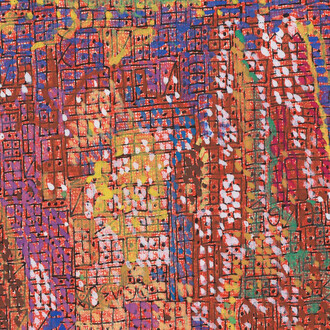The Museum of Cycladic Art and the Regional Services of the Hellenic Ministry of Culture and Sports (Ephorates of Antiquities of Chania, Rethymno, and Herakleion) are co-organizing the exhibition entitled “Crete. Emerging cities: Aptera ― Eleutherna ― Knossos. Three ancient cities revived” from 12 December 2018 to 30 April 2019. This is a multi-faceted exhibition with rich audio-visual aids, including screens, maps, and innovative technologies.
The exhibition was presented today during a press conference attended by Sandra Marinopoulou, President of the Museum of Cycladic Art, Professor Nikos Chr. Stampolidis, Director of the Museum of Cycladic Art, Dr Maria Andreadaki – Vlazaki, General Secretary of the Hellenic Ministry of Culture and Sports, Stavros Arnaoutakis, Regional Governor of Crete, Dimitris Michelogiannis, Executive Development Advisor of the Region of Crete, Dr Eleni Papadopoulou, Director of the Ephorate of Antiquities of Chania, Dr Vaso Sythiakaki, Director of the Ephorate of Antiquities of Herakleion, Anastasia Tzigounaki, Director of the Ephorate of Antiquities of Rethymno, Dr Athanasia Kanta, Honorary Director of Prehistoric and Classical Antiquities of Herakleion, Professor John Bennet, Director of the British School at Athens, and Dr. Kostis Christakis, Knossos Curator, British School at Athens.
The exhibition focuses on three of Crete’s one-hundred cities, according to Homer (hekatompolis), and their common characteristics: their establishment, acme, decline, destruction, abandonment, and demise. Cities with centuries-long history, cities that were abandoned and forgotten, but are also tangible examples of archaeological investigation using similar or different approaches.
The exhibition comprises approximately 500 artefacts dating from the Neolithic (7th-6th millennium BC) to the Byzantine period (8th century AD), some newly discovered, others from old excavations, most of them never presented to the public before: statues, reliefs, figurines, inscriptions, vases, weapons, jewellery, coins, and other artefacts of various materials—limestone, marble, clay, metal (bronze, iron, silver, and gold), faience, glass, ivory, and semi-precious stones. This is the first time that so many artefacts leave the storerooms of the Antiquities Ephorates and display cases of the museums of Crete for a temporary exhibition in Athens.
















